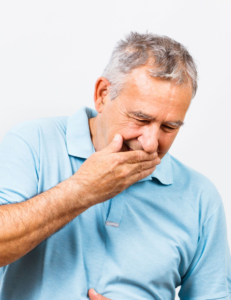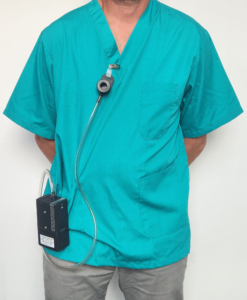Dust risks in hospitals
When it comes to hazardous substances in healthcare environments, it can be easy to overlook the risk that dusts can pose.
Although they can look innocuous, according to NHS Resolution, dust is among the highest occurring hazards in healthcare settings.(1)
In fact, dust and fumes accounted for 37.5% of the settled claims made between 1 April 2013 and 31 March 2023 by healthcare support staff, including plaster technicians and nursing assistants.
Dusts also accounted for 25% of settled claims made during the same period by nurses who are members of the Nursing and Midwifery Council; and for 32% of settled claims overall.
Where do dust risks in hospitals come from?
Dust can come from a variety of sources in hospitals. It can come into hospital buildings from construction, demolition or refurbishment work.
Not only can this lead to respiratory problems due to microscopic particulate, dust can also transport airborne bacteria, leading to lung infections.
Dust is also a natural by-product of prosthetics manufacture, when it is generated during the sanding, grinding, and machining of materials. Likewise, there is a risk from dust when Plaster of Paris or other types of splinting bandages are removed with an oscillating saw.
For this reason, staff working in prosthetic centres, orthotics laboratories and plaster clinics are also at risk of developing respiratory infections from dust.
Monitoring dust exposure in fracture clinic plaster rooms and orthotics laboratories
At Cairn Technology, we have extensive experience in carrying out dust exposure monitoring in fracture clinic plaster rooms and orthotics laboratories.
By measuring your staff’s exposure to total inhalable and respirable dust, we can check levels of these dusts in line with the methods outlined in the HSE Publications MDHS 14/3.
This process simply involves asking delegated members of staff to clip a small filter to clothing which is connected to a sample pump clipped to their waist band. Sampling is carried out during their normal duties.
We then provide you with a report which will show you whether your staff are working within safe exposure limits or if there is any need for improvement.
To ensure continued compliance with Regulation 10 of the Control of Substances Hazardous to Health (COSHH) regulations 2002 (as amended), we recommend that this dust monitoring procedure is carried out once a year.
To discuss our monitoring service for dust risks in hospitals for your hospital or prosthetics centre, or to get a quote, please call us on 0333 015 4345.
References:

 If you manage a fracture clinic plaster room or orthotics laboratory, it is important to ensure that your staff are protected against the risks of inhalable and respirable dust.
If you manage a fracture clinic plaster room or orthotics laboratory, it is important to ensure that your staff are protected against the risks of inhalable and respirable dust. To ensure that this is done, we equip each member of staff with personal sampling pumps and monitor their exposure to dust during a normal working period.
To ensure that this is done, we equip each member of staff with personal sampling pumps and monitor their exposure to dust during a normal working period.